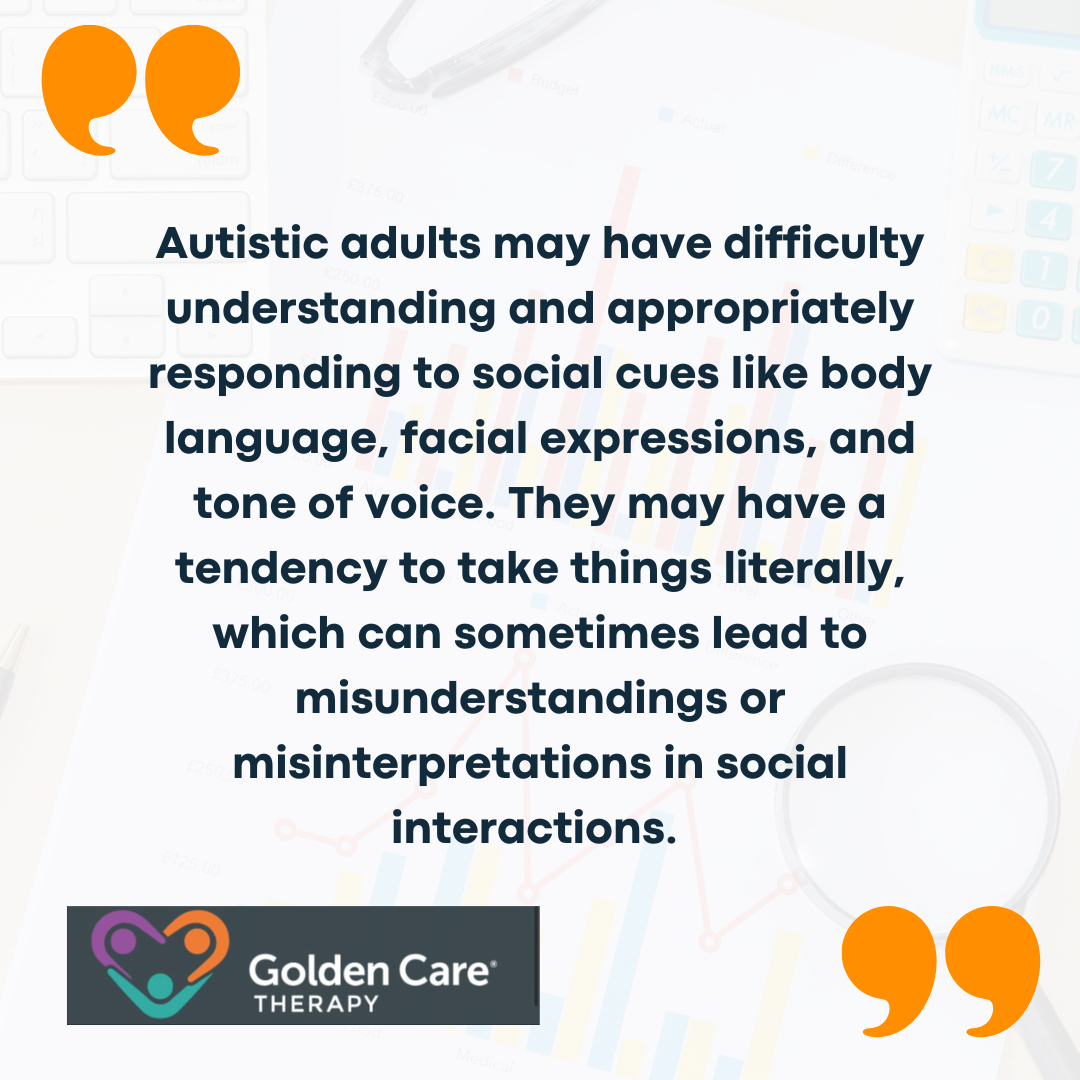Recognizing the early signs of autism in children is essential for early intervention and support. While each child is unique, there are certain indicators that may suggest the presence of autism.

Infancy Indicators
Children with autism often begin showing signs within the first few months of life. Some infants may exhibit reflux or have sensory challenges with food, such as being selective with textures or experiencing discomfort during feeding. It’s important to note that gastrointestinal (GI) disorders are more prevalent in children on the spectrum, and sensory challenges with food are common in kids with ASD.
Another potential early sign is the absence of crawling or a persistent “army crawl.” This means that a child may not move in a typical crawling motion or may skip crawling altogether. This behavior can be an indication of developmental differences associated with autism.
Communication Red Flags
Communication is a significant aspect affected by autism. One red flag to watch for is the absence of pointing at objects to show interest.
According to the Centers for Disease Control and Prevention (CDC), a child with autism might not engage in pointing behaviors by 14 months. Pointing is a social communication skill that typically develops in infancy, and its absence can be an early sign of autism.
Speech regression is another concern to be aware of. If a child’s language skills begin to fade or they lose previously acquired words, it should not be dismissed as a normal developmental phase. Speech regression is a significant indicator and should be addressed promptly.
Early intervention through speech therapy can play a crucial role in supporting language development in children with autism.

Subtle Signs of Autism in Adults
Autism is a neurodevelopmental disorder that affects individuals of all ages. While some signs and symptoms of autism may be more apparent in childhood, there are also subtle signs that can manifest in adulthood.
Recognizing these signs is crucial for understanding and supporting individuals on the autism spectrum.
In this section, we will explore two subtle signs of autism in adults.
Social Interaction Difficulties
One of the hallmark signs of autism in adults is social interaction difficulties.
Autistic individuals may struggle with initiating and maintaining casual conversations, especially in social situations where they are required to engage in small talk, such as work parties or happy hours. They may find it challenging to interpret social cues, understand nonverbal communication, and navigate the unwritten rules of social interactions.

These challenges can make it harder for them to form and maintain meaningful relationships, both personally and professionally.
Emotional Regulation Issues
Emotional regulation refers to an individual’s ability to manage and control their emotions in response to various situations.
In autistic adults, emotional regulation issues can be a subtle sign of autism. Disruptions in routines can lead to emotional volatility due to the inherent inflexibility associated with autism. This emotional dysregulation can manifest as meltdowns or extreme irritation when routines are disturbed.
Autistic adults may also experience difficulty in expressing and understanding their emotions. They may struggle to identify and label their feelings accurately, making it challenging for others to gauge their emotional state.
This can further complicate social interactions and relationships, as the emotional experiences of autistic individuals may not align with societal expectations.
Recognizing these subtle signs of autism in adults is essential for creating a supportive and inclusive environment. It allows for a better understanding of the unique challenges that autistic individuals face in social situations and emotional regulation.

Masking in Autism
Masking, also known as camouflaging, is a concept that refers to the process in which individuals with autism spectrum disorder (ASD) consciously or unconsciously mimic or suppress their autistic traits and behaviors in order to fit into social situations or conform to societal norms.
This masking behavior can manifest differently across individuals and may involve imitating neurotypical behaviors, mimicking social cues, or suppressing autistic mannerisms.
The Concept of Masking
Masking in autism is often observed in individuals, particularly women, who may display less severe symptoms than men. This can be attributed to their strong desire to learn socially acceptable ways of acting and the pressure to repress certain ASD behaviors.
Women with autism may go to great lengths to hide their true selves, often mimicking the behavior of their peers in an attempt to blend in and avoid standing out.
It is worth noting that masking in autism is not inherently negative. In fact, it can serve as a coping mechanism and a means of navigating social situations that may otherwise be overwhelming.
However, masking can come at a cost, as it requires significant effort and energy to constantly adapt and suppress one’s natural autistic traits. This can lead to exhaustion, increased stress levels, and difficulty in maintaining a sense of identity.
Impact on Mental Health
Masking in autism can have a significant impact on mental health, particularly in women with autism. The constant need to conform and hide one’s true self can lead to feelings of anxiety, depression, and low self-esteem. The pressure to fit into a neurotypical world without a formal diagnosis can be emotionally draining and may contribute to a sense of isolation and misunderstanding.
Moreover, the exhaustion that comes with masking can exacerbate stress levels and contribute to mental health challenges. The energy required to constantly monitor and adjust behavior to meet societal expectations can leave individuals feeling depleted and overwhelmed.
Recognizing the presence of masking and its potential impact on mental health is crucial. Providing support and creating environments that allow individuals with autism to feel safe and accepted can help alleviate the burden of masking and promote overall well-being.
Understanding the subtle signs of autism, as well as acknowledging the concept of masking in autism, are important steps in fostering a more inclusive and supportive society. By promoting acceptance and embracing neurodiversity, we can create an environment where individuals with autism can feel comfortable being their authentic selves, without the need to even mask their true identity.
Sources:
https://www.businessinsider.com/subtle-signs-you-might-have-autism-according-to-psychologist-2023-10
https://www.moshikids.com/articles/the-more-subtle-signs-of-autism
https://themighty.com/topic/autism-spectrum-disorder/missed-autism-signs



